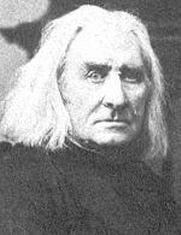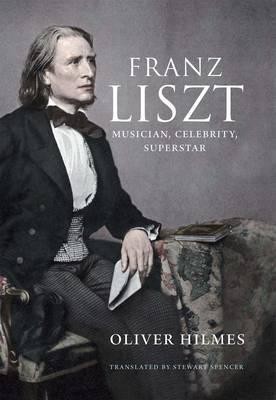


He spent the last decades of his life moving between Rome, Budapest and Weimar, composing and teaching extensively. After leaving Weimar in 1861, Liszt became an Abbot in the Roman Catholic Church. These included Hans von Bülow, later to become a famous conductor, and Carl Tausig, one of the greatest piano virtuosos of the late−19th century. The Weimar years were also the period in which he taught his most important piano students. Most of his symphonic poems were written during this time and premiered under his baton. He also had the means for the first time to compose and perform orchestral music. He championed the music of Berlioz and Wagner, fellow members of the so-called ‘New German School’ that favoured programme music over traditional, abstract forms. In 1848 Liszt became Kapellmeister at Weimar, where he moved with the last great love of his life, Princess Carolyne von Sayn-Wittgenstein. These works served Liszt the virtuoso, but also testified to his strengths as a composer. Réminiscences de Don Juan, based on Mozart’s Don Giovanni, is the quintessential example of this genre. He also concocted paraphrases that link or combine various themes from operas and larger works. He transcribed Schubert songs, Beethoven symphonies and even Berlioz’s Symphonie fantastique. Liszt was known for popularising the music of other composers through his piano arrangements. These are arguably misnamed, as most are based on Gypsy themes rather than Hungarian folk music. The Hungarian Rhapsodies were another important part of his early repertoire. Sets such as the Paganini Études and Transcendental Études extended piano technique beyond what had previously been thought possible. Some of Liszt’s most important compositions up to this time were his Études. Schumann waspishly observed that to hear Liszt play from behind a screen would have only half the impact. His physical movements and facial expressions were crucial to this effect. Nevertheless, Liszt made his greatest impression by invoking an expressive world, encompassing everything from agony to ecstasy. His performances were based, in part, on dazzling showmanship and stunning displays of technical prowess. He was the first to offer piano ‘recitals’, that is, concerts in a large hall featuring only solo piano. By 1839 the relationship had soured, and Liszt began travelling alone on a performing tour that would eventually last eight years. These so-called ‘Years of Pilgrimage’ allowed him to see Europe, to secure his leading reputation as a pianist and to spend more time composing. In 1835 Liszt left Paris for Switzerland with the Countess Marie d’Agoult, by whom he fathered three children. His quest was aided by the improved capabilities of the Érard pianos that he now played. Paganini’s example inspired Liszt to push piano technique through previously unimagined difficulties and intricacies to attain new brilliance and sonorities. The most decisive influence, however, came from the violinist Nicolò Paganini, who conveyed cathartic expression through his extraordinary technical skills and magnetic stage manner. He was personally acquainted with Hector Berlioz, Frédéric Chopin, Victor Hugo, Honoré de Balzac, Eugène Delacroix and many others. By his early 20s Liszt was surrounded by the leading lights of Romanticism. One of his pupils was Caroline de Saint-Cricq, the first of many women with whom he fell in love. Nevertheless, he needed to give piano lessons to survive.

He had already contemplated a religious life, and thoughts of death now brought these ideas into focus. His father’s sudden death when Liszt was still only 15 affected him deeply. He was refused entry to the Conservatoire but continued to give concerts and to tour. When Liszt was not quite 12, he and his father moved to Paris. Stories soon circulated about the special aura that he had when performing. Liszt gained a thorough grounding in piano technique, memorisation and sight-reading, skills for which he would later become legendary. A year later he moved to Vienna and studied feverishly for 14 months under the composer, pianist and former Beethoven pupil, Carl Czerny. Liszt showed early promise and made his concerto debut at the age of nine. Few other musicians have led such complex lives, earned such spectacular and contradictory reputations, or left such an influential body of work. His musical output ranged from dazzling showpieces to experimental works that continue to challenge audiences. And he was a kind and generous man whose air of urbanity caused many to distrust him. He was a spellbinding virtuoso who harboured serious musical ambitions. Franz Liszt was a charismatic showman with a deeply spiritual personality.


 0 kommentar(er)
0 kommentar(er)
